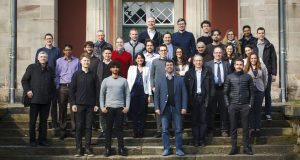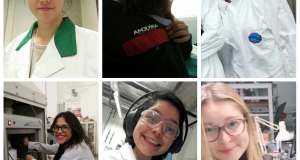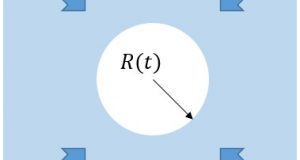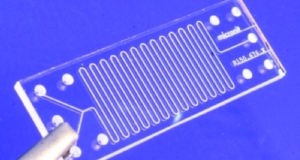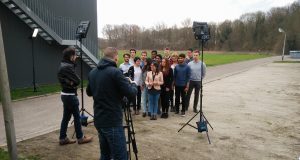– Roberta Manno, University of Zaragoza As my co-worker Mohammed explained in the last blog, the first birthday of the COSMIC team was celebrated during the meeting in March. Results, challenges, observations and problems were expounded to all the members. As PhD students, we are usually focused only on experiments, publications, patents and so on; but to be a good scientist that ...
Read More »News
COSMIC completes 1 light year at the Network Wide Event 3 held in Gottingen, Germany
– Mohammed Noorul Hussain, COSMICologist Using light year as a metaphor I want to express a verbal celebration for all that was achieved by the third NWE of the COSMIC project, which also completes one year since its kick-off meeting. Scientific productivity in the past one year, appropriately catalyzed by discussions and collaboration, has been quite high. Movement of ESRs ...
Read More »Microinnova – Continuous Manufacturing / Process Intensification
– Gerardo de Leon, Microinnova I recently joined Microinnova, one of the leading companies in continuous chemical processing and process intensification with 15 years of experience in this field. Microinnova offers process development and plant engineering by applying flow technology. The company provides services regarding the conversion of processes from batch to continuous manufacturing, does feasibility studies on continuous lab plants, ...
Read More »INSPIRE network enables easy access to Process Intensification equipment & expertise
The Intensified Flow Separator Infrastructure and Expertise Network (INSPIRE) launched its website and database. INSPIRE is a network of infrastructure so it offers access to infrastructure and expertise on Process Intensification for the separation of high-value metals. The network consists of 7 partners from both Academia and Industry which bring in their infrastructure and expertise and make it accessible ...
Read More »Time to Celebrate Women in Science!
11 February! Today we celebrate the International Day of Women and Girls in Science, declared by the United Nations (resolution A/RES/70/212), as a way to achieve gender equality and empowerment of women and girls in science. UN Secretary-General, António Guterres, said “We need to encourage and support girls and women achieve their full potential as scientific researchers and innovators.” From ...
Read More »A Fluid with a Hole?
– Dwayne Stephens, University of Göttingen Strong sound waves, such as ultrasound, in a liquid produce bubbles by rupturing the liquid, resulting in an effect called acoustic cavitation1. But to understand this phenomenon more clearly we must first understand the physics behind a single cavitation bubble. To do so we look at a problem posed by W. H. Besant in ...
Read More »Why use a Microreactor for Chemical Processes?
– Claire Delacour, KU Leuven The Microfluidic domain has known important development over the last two decades. In 1990, only less than 10 patents were published whereas in 2004 more than 350 patents were published in the USA[1]. This study showed the large range of microfluidic applications, and impacts in Biology and Chemistry. A microchannel reactor is a continuous flow-type ...
Read More »ETN COSMIC releases first video
Europe on the wave to innovation In the last decades, Europe has lost its top position in the Chemical industrial market to China. One of the most important factors in this process is the lag in innovation. The COSMIC project (European Training Network for Continuous Sonication and Microwave Reactors) tackles this hurdle by training 15 young potential researchers in new ...
Read More »Weber Ultrasonics – Ultrasonic Partner Company
— Ana Luisa Maria, University of Torino, Arkema Ultrasounds is an emerging technology with many applications in different industrial sectors as Ekim Sarac explains meticulously in her blog. Weber Ultrasonics based in Germany, rises from the necessity of innovation in industrial application spectrum of ultrasound technology. The company is focused on the development of potential uses and processes by expanding ...
Read More »Microwaves: it’s about what you’re made of
— Fabio Cameli, KU Leuven I recently read a tweet saying: “The same boiling water that softens the potato hardens the egg. It`s about what you`re made of not the circumstances”. Actually, microwave technology is essentially based on the same concept: different materials will behave differently under a microwave field resulting in what is called “selective heating”. In fact, it seems ...
Read More »


